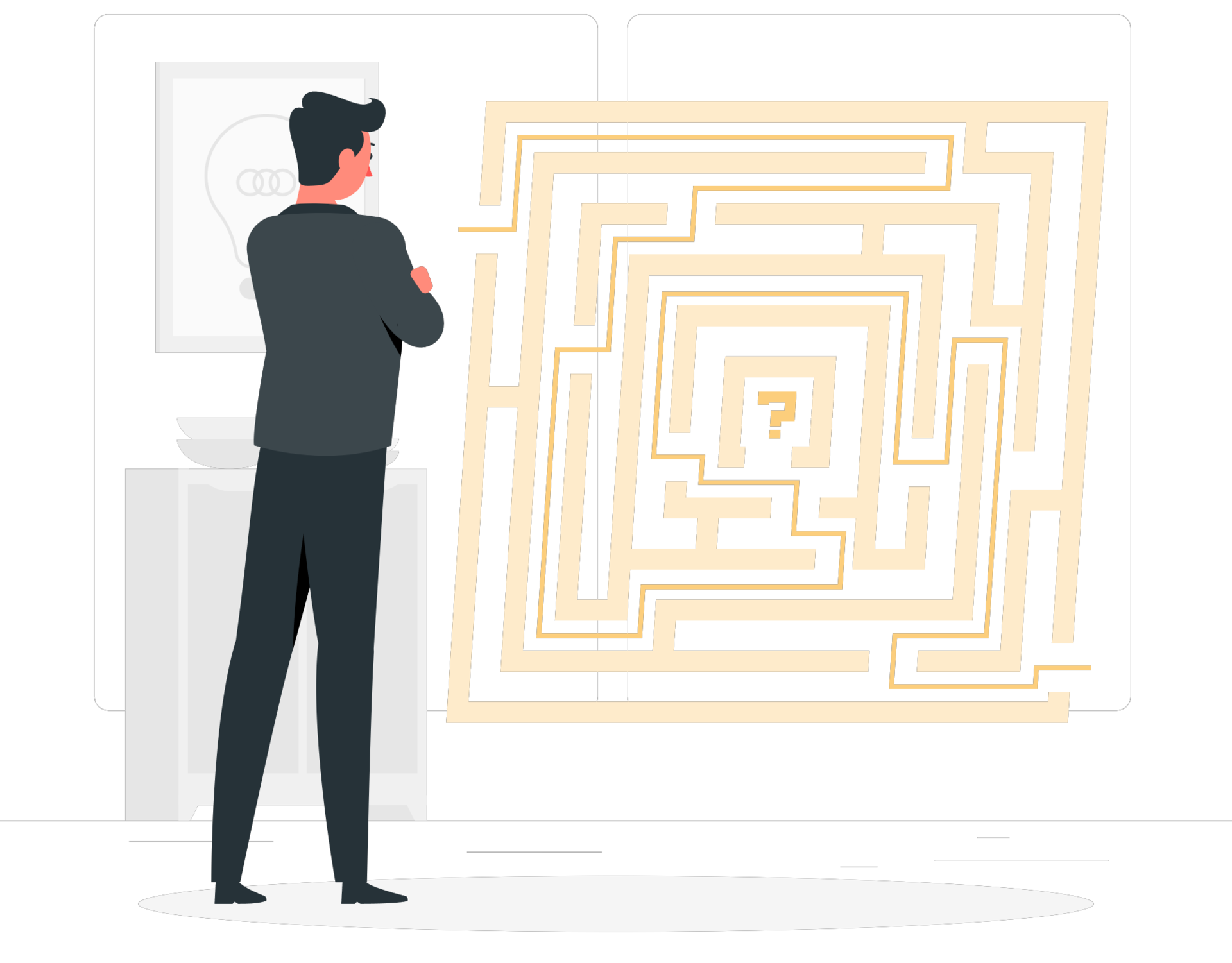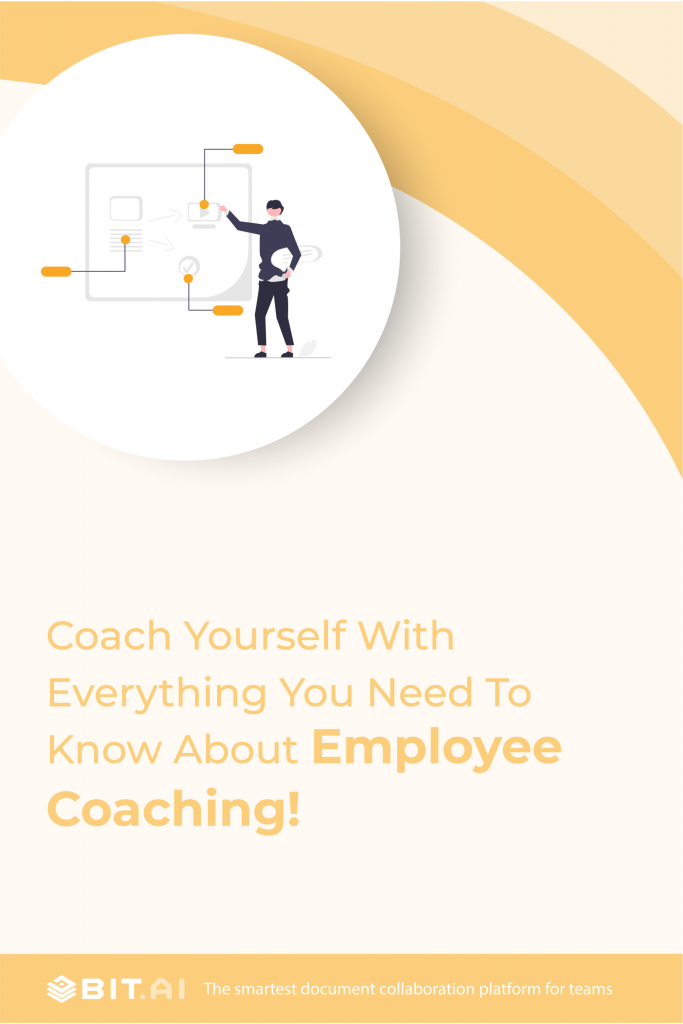In this fast-paced era of innovation and ever-evolving change, what helps unlock the true potential of your workforce is the power of coaching.
Gone are the days of top-down command and control, today, it’s all about fostering an environment of collaboration, growth, and continuous learning. After all, everyone wants to tap into the parts of themselves that they didn’t know existed, and what better way to do that than through employee coaching?
Employee coaching serves as a gateway, offering your employees the chance to acquire sought-after skills that can push your organization toward success. It provides a vital structure for personal and professional growth, that lets people tap into their full potential.
So, whether you’re a business owner, a team leader, or an aspiring professional seeking to make a lasting impact, get ready to delve into the nitty gritty of effective employee coaching that will revolutionize the way you lead, inspire, and develop your team. Let’s get started!
What is Employee Coaching? (Definition)
Employee coaching is a process where a coach helps the employees in an organization by providing guidance, support, and mentorship to enhance their skills, performance, and overall development. It’s a collaborative approach where the coach works closely with employees to set goals, identify areas for improvement, and create strategies to achieve those goals.
The focus is on empowering employees, unlocking their potential, and assisting them in overcoming challenges through valuable feedback, guidance, and resources. The coach acts as a mentor, offering personalized support and motivation to help employees improve their performance, acquire new skills, and achieve their professional objectives.
Employee coaching goes beyond traditional training methods, as it fosters a deeper understanding of individual strengths, weaknesses, and aspirations, resulting in increased engagement, productivity, and job satisfaction.
Ultimately, employee coaching is all about cultivating a culture of continuous learning and development within the organization, benefiting both employees and the overall success of the company.
Types of Employee Coaching
1. Performance Coaching
Performance coaching works closely with employees to set clear performance goals, offering targeted feedback, and guiding them towards reaching their full potential in their current roles. With performance coaching, employees receive the support and guidance needed to excel in their job responsibilities, enhance their skills, and achieve exceptional results.
2. Career Coaching

Career coaching is a type of coaching that focuses on mapping out the journey to professional success and personal fulfillment. It involves exploring an employee’s skills, interests, and goals, and collaboratively creating a roadmap for career advancement. A career coach acts as a trusted advisor, helping individuals navigate through career challenges, identify growth opportunities, acquire new skills, and make informed decisions.
3. Skills-Based Coaching
Skills-based coaching provides focused guidance and practice to help individuals develop specific competencies required for their roles. Whether it’s mastering new software, refining presentation skills, or improving negotiation tactics, this coaching approach offers personalized training, constructive feedback, and ample opportunities for practice. It’s like having a skill-building workshop tailored to your unique needs, empowering you to become a true expert in your field and excel at what you do.
4. Leadership Coaching
Leaders are not born overnight; they are nurtured and developed. Leadership coaching focuses on cultivating the essential qualities and skills needed for effective leadership. It addresses various aspects, including communication, decision-making, strategic thinking, and team management. It helps individuals unleash their leadership potential, enhance their ability to inspire and motivate others and navigate the challenges of leadership with confidence.
5. Onboarding Coaching
Onboarding coaching provides personalized support and guidance to new employees during their initial days, weeks, or months in the organization. It helps them navigate the organizational culture, understand their roles and responsibilities, and establish strong connections with colleagues. The coach serves as a friendly guide, answering questions, providing insights, and ensuring seamless integration into the team.
Read More: Remote Employee Onboarding Checklist and Best Practises!
6. DEIB coaching
DEIB coaching refers to coaching sessions and support that focus specifically on the areas of diversity, equity, inclusion, and belonging within an organization. It is a specialized coaching approach that helps individuals and teams understand, navigate, and contribute to creating a more inclusive and equitable work environment. DEIB coaching addresses topics such as unconscious bias, cultural awareness, fostering inclusive communication, allyship, and creating a sense of belonging for all employees.
7. Developmental Coaching
Developmental coaching takes a holistic approach to employee growth and development, addressing both professional and personal aspects. It focuses on building self-awareness, enhancing emotional intelligence, fostering resilience, and nurturing personal and professional growth. Through deep conversations, reflection exercises, and action plans, individuals gain the tools and mindset needed to navigate challenges, overcome limitations, and create a meaningful and fulfilling career journey.
8. Communication effectiveness coaching
Communication effectiveness coaching is crucial for all positions. To enhance communication skills, employees should have access to resources that facilitate their skill development. This form of coaching empowers team members to cultivate new abilities and refine their communication effectiveness. By engaging in communication coaching, employees can improve various aspects such as speaking confidently in meetings, delivering impactful presentations, honing business writing skills, and establishing meaningful connections.
Now that you know the types of employee coaching available, let’s take a look at the multitude of benefits that it offers!
The Benefits of Employee Coaching
1. Skill Enhancement

Imagine your team members as a group of talented athletes. Employee coaching acts as their personal coach, refining their skills and helping them reach their full potential. Through coaching, employees acquire new knowledge, improve their abilities, and develop the necessary competencies to excel in their roles. It’s like unlocking hidden talents and transforming good performers into exceptional ones.
2. Increased Engagement
Just as a captivating story keeps us engaged, coaching keeps employees actively involved in their work. With personalized guidance and support, employees feel valued and motivated, resulting in higher levels of engagement. Coaching nurtures a sense of ownership, ignites passion, and fosters a positive work environment where employees thrive. It’s like fueling the fire within each individual, driving them to give their best every day.
3. Performance Boost
Remember how a high-performance engine propels a race car to victory? Employee coaching acts as that engine, propelling individuals and teams to outstanding performance. By setting clear goals, providing constructive feedback, and offering guidance, coaching optimizes performance and helps employees exceed expectations. It’s like unleashing a wave of productivity and excellence, taking performance to new heights.
Read More: Performance Reviews: What Are They & How to Create Them?
4. Enhanced Leadership Skills
Great leaders are not born overnight, they are nurtured through coaching. Employee coaching cultivates leadership skills by providing guidance, mentorship, and opportunities for growth. It helps individuals develop essential leadership qualities such as effective communication, strategic thinking, and team management. With coaching, employees evolve into strong leaders who can inspire, motivate, and guide others toward success.
5. Personal and Professional Development
Life is a journey of continuous growth, and employee coaching paves the way for personal and professional development. It encourages self-reflection, self-awareness, and a mindset of lifelong learning. Coaching helps individuals identify their strengths, overcome limitations, and unlock their true potential. It’s like embarking on a transformative voyage of self-discovery and empowerment, where personal growth intertwines with professional success.
6. Improved Collaboration and Teamwork
Just as a well-conducted orchestra creates harmonious melodies, coaching enhances collaboration and teamwork within organizations. By focusing on interpersonal skills, communication, and conflict resolution, coaching fosters a collaborative work environment. Employees learn to appreciate diverse perspectives, respect each other’s strengths, and work together towards shared goals. It’s like weaving a strong, cohesive team fabric that propels the organization forward.
Now you know the benefits of employee coaching, so let’s now take a look at how you can use it to develop an effective team!
Read More: Team Accountability: What is it and How To Improve it?
How To Use Employee Coaching To Develop An Effective Team?
1. Provide Resources and Development Opportunities
Offer employees access to a wide range of resources and development opportunities that can help them enhance their skills and knowledge. From online courses and workshops to industry conferences and mentorship programs, provide a variety of options for continuous learning. By investing in their growth, you show employees that you value their development and empower them to reach their full potential.
2. Train New Employees Promptly
When new team members join, ensure they receive comprehensive and timely training. This means equipping them with the knowledge, tools, and information they need to hit the ground running. A well-structured onboarding program can help them quickly understand their roles, responsibilities, and company processes. When you invest in their initial training, you lay a solid foundation for their success and integration into the team.
3. Provide Personalized Coaching
Recognize that each employee is unique and has different strengths, weaknesses, and aspirations. Tailor your coaching approach to meet their individual needs. Through one-on-one coaching sessions, identify areas for improvement and collaborate with employees to develop action plans that align with their professional growth goals. Offering them personalized support demonstrates your commitment to their success and creates a nurturing environment for their development.
4. Document Employee Performance
Regularly track and document employee performance to gain insights into their progress and identify areas where they excel or need improvement. This information serves as a valuable reference during coaching discussions. By documenting strengths, weaknesses, and achievements, you create a foundation for constructive feedback and targeted development efforts. It also allows you to recognize and celebrate employees’ accomplishments, further motivating them to excel.
5. Set Clear Goals
Establish clear and measurable goals for each team member that align with both their individual aspirations and the team’s objectives. Clear goals provide employees with direction, purpose, and motivation. They know what is expected of them and can focus their efforts accordingly. When goals are challenging yet attainable, they inspire growth and encourage employees to stretch their capabilities, resulting in improved performance and a stronger team.
6. Seek Feedback
Foster a culture of open communication by regularly seeking feedback from employees. Create opportunities for them to share their thoughts, ideas, and concerns regarding their coaching experience, team dynamics, and any obstacles they may be facing. Actively listen to their feedback and take it into consideration when making decisions. When you value their input, you create an inclusive environment where employees feel heard and valued, and you can address any challenges or issues that arise.
7. Measure Skills Before Assigning Responsibilities
Before allocating new responsibilities or tasks, assess employees’ skills to ensure they have the necessary capabilities and expertise. This helps avoid overwhelming employees or setting them up for failure. By matching tasks to employees’ skill levels, you promote their success and growth.
As employees gain confidence and demonstrate proficiency in their current responsibilities, gradually expand their roles to challenge and develop their skills further. This approach builds a team that is capable, well-rounded, and capable of taking on new challenges.
Now that you know to use employee coaching to develop an effective team, let’s take a look at some tips for employee coaching to enhance its effectiveness!
Tips For Employee Coaching
1. Create a Safe Environment
The first and foremost thing to do is to foster an environment of trust and psychological safety where employees feel comfortable expressing their thoughts and concerns. Encourage open and honest communication, actively listen to their feedback, and demonstrate empathy and understanding. Creating a safe environment this way encourages employees to be more receptive to coaching, share their challenges, and seek guidance without fear of judgment.
2. Make Goals With the Team
Employee coaching is all about employees so try to involve them in the goal-setting process. Collaboratively establish goals that align with their individual aspirations, team objectives, and organizational targets. When employees have ownership over their goals, they feel a sense of responsibility and commitment toward achieving them. Regularly review progress and provide guidance to ensure they stay on track and receive the necessary support.
3. Provide Additional Training Sessions
Offer ongoing training and development opportunities beyond initial onboarding. Conduct regular training sessions to sharpen skills, introduce new techniques, or address specific areas that need improvement. Training sessions not only enhance employees’ capabilities but also demonstrate your commitment to their growth and development.
Must Read: Organizational Ethics: Definition, Importance & Real-World Examples!
4. Host Weekly Meetings

Schedule regular coaching meetings or check-ins with employees. These meetings provide a dedicated time for discussing progress, challenges, and development opportunities. Use this time to provide feedback, offer guidance, and address any concerns. It’s also an opportunity for employees to share their achievements, seek clarification, or ask questions. Consistent and meaningful interactions during these meetings can significantly contribute to employee growth and performance.
5. Appreciate and Encourage Employees
Employee coaching is not merely educating and upskilling, it’s also about recognizing and appreciating employees’ efforts and achievements. Celebrate milestones, acknowledge their contributions, and provide positive reinforcement. Express gratitude for their hard work and dedication. This recognition and encouragement not only boost morale but also motivate employees to continue excelling. Regularly provide constructive feedback and praise to reinforce positive behaviors and inspire continuous improvement.
Wrap Up
In the journey of building a successful and thriving team, employee coaching emerges as a powerful tool. By creating a safe and supportive environment, setting collaborative goals, providing ongoing training, fostering open communication, and appreciating their efforts, you can unlock the full potential of your employees.
Coaching becomes the catalyst for personal growth, professional development, and team synergy. As you invest in your employees’ success, you cultivate a culture of continuous improvement and empowerment.
We hope this blog has helped you learn a thing or two about employee coaching. Together, you can forge a high-performing team that embraces challenges, exceeds expectations, and pushes your organization to new heights! Adios, amigos!
Further Reads:
Diversity Training in The Workplace: The 6 Types of Training!
Employee Training: Definition, Importance & Tools to Use!
Company Wiki: Enhancing Collaboration and Information Access!
Contract Workers Vs Employees: Learn About The Major Differences!
Workplace IceBreakers: Ask The Right Questions To Know Your Team!


